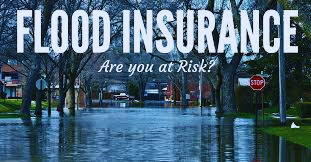Introduction:
When it comes to protecting your home, flood insurance is a crucial component that often gets overlooked. Flooding can occur unexpectedly, and the financial impact can be devastating. Understanding flood insurance rates and quotes can help you make informed decisions to safeguard your property. In this blog post, we’ll explore what affects flood insurance rates, how to obtain quotes, and tips for getting the best coverage.
What is Flood Insurance?
Flood insurance is a specialized policy that covers damage to your home and belongings caused by flooding. Standard homeowners insurance typically does not cover flood damage, which is why obtaining a separate policy is essential, especially if you live in a flood-prone area.
Why Flood Insurance Rates Matter
Flood insurance rates vary based on several factors, and understanding them can help you budget effectively. Rates are influenced by:
- Location: Areas designated as high-risk flood zones typically face higher rates. The Federal Emergency Management Agency (FEMA) assigns flood zone designations based on historical data and floodplain mapping.
- Elevation: Homes at a lower elevation are more susceptible to flooding and may incur higher insurance premiums. Conversely, elevated properties may qualify for lower rates.
- Type of Coverage: Flood insurance offers two types of coverage: building property and personal property. The extent of your coverage will impact your premiums.
- Deductibles: Like other types of insurance, higher deductibles usually result in lower premiums, but this also means you’ll pay more out-of-pocket in the event of a claim.
How to Get Flood Insurance Quotes
Obtaining flood insurance quotes is a straightforward process. Here are steps to follow:
- Assess Your Needs: Determine the level of coverage you need based on your home’s value and the contents you want to protect.
- Research Providers: Many insurance companies offer flood insurance. Look for those with a strong reputation and positive customer reviews.
- Use Online Tools: Websites like the National Flood Insurance Program (NFIP) can help you find local providers and estimate your rates based on your location.
- Request Multiple Quotes: Contact several insurers to get quotes. Comparing rates can help you find the best deal and coverage options.
- Consider Discounts: Ask insurers about discounts for risk-reduction measures, such as elevating your home or installing flood vents.
Tips for Lowering Your Flood Insurance Rates
While flood insurance is essential, there are ways to potentially lower your premiums:
- Elevate Your Home: If possible, elevate your home above the base flood elevation (BFE) to reduce risk.
- Mitigate Risks: Implement flood mitigation measures, like installing sump pumps or water-resistant barriers.
- Join a Community Program: Some communities participate in FEMA’s Community Rating System (CRS), which can provide discounts for policyholders in flood-prone areas.
- Review Your Policy Annually: As your home’s value changes, so should your coverage. Regular reviews can ensure you’re not overpaying.
- Stay Informed About Local Flood Risks: Understanding the risks in your area can help you make better decisions about coverage levels and potential risk-reduction measures.
Conclusion
Flood insurance is a vital safety net for homeowners, especially in flood-prone areas. By understanding flood insurance rates and actively seeking quotes, you can find the best policy to protect your home and belongings. Remember to consider factors such as location, elevation, and coverage type when evaluating your options. With the right approach, you can secure a policy that meets your needs without breaking the bank.
For more information on flood insurance and to obtain quotes, visit NFIP’s official website or consult with a trusted insurance agent today. Your home’s safety is worth the investment!
